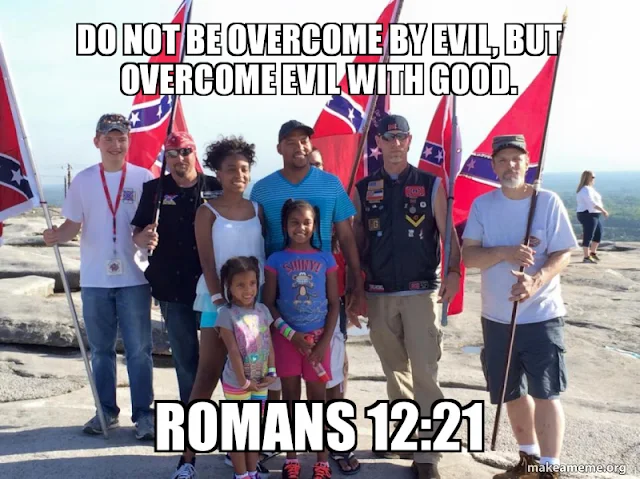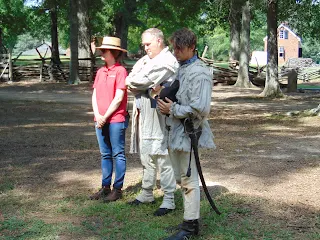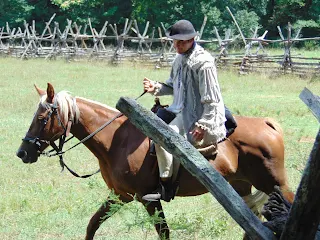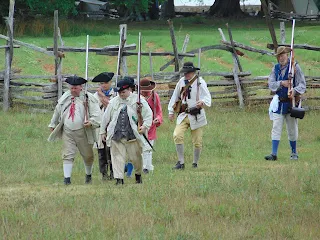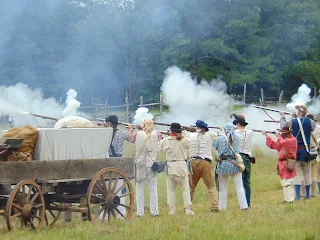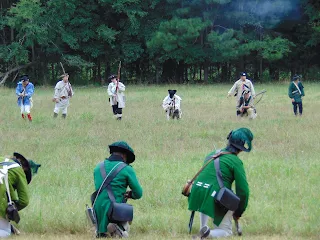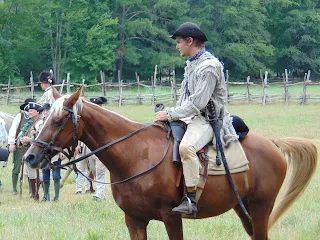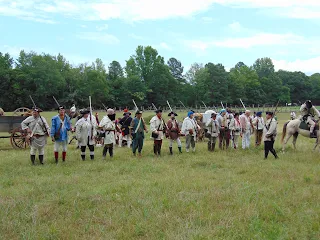Greetings and salutations, y'all!
For all of y'all who have been following this blog since it began in 2014, you know my official position on the display of the Dixie Cross banner (Confederate battle flag Army of Northern Virginia). For those of you new to this blog, or reading this post, allow me to reaffirm my stance.
The Dixie Cross banner is a living symbol of Southern identity and cultural heritage, and a living memorial for all the the Southern dead from the War Between the States (American Civil War) 1861-1865 that ties Confederate descendants with the memories of their fallen ancestors. The flag is a part of the diverse identity of the South and its long history and belongs to all Southern-born peoples regardless of their racial identity, ethnic origins, and even their religious affiliations, or lack of them.
I also view the fight by most Confederate heritage defenders (again regardless of ethnicity and their faith) to display this banner peacefully and with honor as a righteous fight against the forces of bigotry, fear, and hatred in the form of white supremacist nationalism and politically correct cultural fascism respectively.
It is my sincere belief that, through proper education and an brutally honest telling of the truth about its history from its conception to the present day (both the negatives and the positives), there will come a day in America's future when the display of that flag will offend nobody; and its disgraceful misuse by the forces of hate and reactionary ideologies is extinct -- or at least no longer recognized as legitimate by a significant majority.
Naturally, over the now 26 years that have affirmed this view and not wavered from it since, I have met my share of people who have attempted to convince me that I am wrong.
More often then not, once these detractors see that I won't buy into their arguments most of these people simply throw hateful names my way, or accusations at this blogger that range from either being: a flat out liar, mentally deranged, or as one blogger once put it nicely, though a bit on the condescending side: "....a decent and honorable guy who has been brainwashed, or is otherwise incredible naive about the people he associates himself with."
And those are by far the nice ones.
Believe me when I say in all that time this blogger has seen the good and the bad in this fight over the public display of Dixie's embattled banner. I have seen this banner bring together people from all walks of life, and I have seen people who have reject the false teachings of the regressive and reactionaries who call our Southern banner a tool of bigotry. I have even seen people I respect die because of their faith in the defense of our shared Confederate heritage and our fellow Southerners.
 |
| Y'all mean ALL folks! |
I have also seen far too many Southern people, many of them Confederate descendants, who have rejected the banner and a part of their own personal identity for various reasons. Most of them are political pandering, while others out of sincere negative experiences connected with those who wrongly misuse that flag as a symbol of hatred.
The saddest of these are fellow Christians who share my faith, but find themselves the victims of the modern-day sin of political correctness that ultimately seeks to divide and conquer the faith we share.
As a student of history and American culture, as well as a humble country writer, I accept that I don't know everything. More so, I also know that in life, one is always learning and one is never too old to learn new things. I also accept the idea that maybe I am not always right. Those who never accept that possibility go through life with a closed mind, and far too much pride in their hardened hearts.
This brings me to the subject of today's blog post: Is it Christian to fly the Confederate battle flag?
The Case Of Mr. Larid and Christian Opponents
Earlier last month thousands of Christians descended on the small, rural town of Diana, Tennessee on the second weekend in June for a two-day, Christian sing-along event known as "Diana Singing."
However, a couple of weeks following the event, the event’s organizers came under fire from a loud voice from the internet for a photo and video they posted to their Facebook page of an impromptu, pre-event parade in which a man can be seen carrying a Confederate flag on a motorized scooter.
The loud voice of opposition came from one Mr. Madison Laird, a Bible workbook author who has been attending Diana Singing for 20 years, has been the most vocal critic of the post.
After several failed attempts to get the offensive post removed, Laird and his wife decided to publicly condemn the organization for not taking action to remove the posts. Together, on his website and Facebook page, they urged people to contact Diana Singing directly for the removal of the Confederate imagery.
Then in a move that this blogger personally finds petty, once the picture was removed and the organizers issued an apology (which I don't feel they needed to do) Mr. Laird refused to accept that apology and even reposted the picture on the site himself. This tells me there was more at work than just a need to set people's minds right as he saw it. The fact that his little protest was picked up by several news sites and earned his blog a small degree of recognition probably isn't a coincidence, although Mr. Laird himself claims this was never his intention.
On his website, Bible Works, Mr. Laird, who was born and raised in Nashville, Tennessee, but now lives in California, compared the display of the Dixie Cross to waving the Nazi flag. “I would never make a choice to display this image, any more than I would display a swastika if I were German and that were a part of my heritage,” Laird also added that it is illegal in Germany to display the Nazi symbol.
This, of course, is a ridiculous argument for a number of reasons, not the least of which it was Southern-born US soldiers in World War 2 (some of whom had the battle flag with them in Europe) who helped defeat Nazi Germany, and liberated the concentration camps. Also add to the fact that, in proper religious context at Buddhist temples, the swastika is not actually banned in Germany entirely, his argument is flawed.
 |
| 16th US Bomber Squadron "Dixie Special" during World War II. |
Laird also appears to suggest what is and isn't a "proper Christian response" proclaiming that memorializing the Confederate flag is inconsistent with Christian values. He also sited the Biblical passage of 1 Corinthians 8, another tactic that Christian opponents of the Dixie Cross enjoy throwing around.
For those of y'all unfamiliar with the passage, the apostle Paul talks about the instruction on Christian freedom, specifically when it comes to food and drink sacrificed to idols, as was a custom in some parts in those days. He sited how some people who call themselves believers and followers of Christ will argue that they have a right to the food because of freedom. Paul responded that before I exercise my rights, I need to think about the effect my actions have on others.
He points to his ethnic heritage, his religious upbringing, and his zealous history, and then he says he considers them all loss for the sake of Christ. Pride and zeal are dangerous things. Better to boast in the Lord.
Verses 12 - 13 are the key argument: "When you sin against your brothers in this way and wound their weak conscience, you sin against Christ. Therefore, if what I eat causes my brother to fall into sin, I will never eat meat again, so that I will not cause him to fall."
Now substitute meat for Confederate flag, and you have the basis of what is a somewhat overly simplistic argument: If my brother or sister is offended by my actions, I am not bringing glory to God. A good argument on truth in faith, but also one twisted by modern-day political thinking disguised as faith that serves the cause of hate.
Mr. Laird, like all those who support this interpretation, are making one fundamentally fatal flaw: they confuse doing right with what is right.
It has long been established that accepting the wrong-thinking view of the Dixie Cross as a symbol of hatred is in fact a pro-white supremacist stance.
People who argue that public display of the flag in any context is wrong, and worse, who fight against those who argue against racist misuse of the flag are themselves supporting the very bigotry they claim to oppose; either willingly or more likely unwillingly. When you promote that view, you are not just asking someone to put away something that "offends" another, you are asking the person offended to accept fear and reaction as normal state of being.
For my part I would rather sit down with someone offended by that flag, take the time to teach, to listen, to educate and come to understanding. I would rather be a brother or sister to my fellow Southerners of color and teach them not to judge based on stereotypes. I would rather a child was raised not to be afraid, but to overcome that fear with love. That is how you defeat racial supremacist arguments, and how you counter politically correct fascism.
Love is central to the Christian ethic -- as well as the ethic most decent people of other faiths live by.
Christianity and the Dixie Cross
Actually, the Dixie Cross itself has some really interesting historical origins related to the Christian faith.
To start with, the Dixie Cross itself is based on the Cross of Saint Andrew, the brother of St. Peter and one of the apostles of Jesus Christ.
After teaching the gospel of Christ, Andrew is said to have been martyred by crucifixion at the city of Patras in Achaea in modern-day Greece in AD 62.
Early texts describe Andrew as bound, not nailed, to an X-shaped cross of the form called crux decussata (or "saltire" now commonly known as a "Saint Andrew's Cross") as opposed to a Latin cross of the kind on which Jesus is said to have been crucified. According to accounts this was done at Andrew's request as he deemed himself unworthy to be crucified on the same type of cross as Jesus had been.
According to legend, almost 800 years later, the St. Andrew's Cross became the national symbol of Scotland in AD 832 when Oengus II led an army of Picts and Scots into battle against the Angles, led by Ethelstan, near modern-day Athelstaneford, East Lothian, Scotland. The legend states that he was heavily outnumbered and hence whilst engaged in prayer on the eve of battle, Oengus vowed that if granted victory he would appoint Saint Andrew as the Patron Saint of Scotland. On the morning of battle white clouds forming an X-shape in the sky were said to have appeared. Oengus and his combined force, emboldened by this apparent divine intervention, took to the field and despite being inferior in numbers were victorious. Having interpreted the cloud phenomenon as representing the crux decussata upon which Saint Andrew was crucified, Óengus honored his pledge and duly appointed Saint Andrew as the Patron Saint of Scotland.
The white saltire set against a celestial blue background was said to have been adopted as the design of the flag of Scotland on the basis of this legend. It would also be based on this design that the Confederate battle flag would come to exist.
In 1861 the provisional Confederate Congress set about to create a committee to design a new national flag to be raised on March 4th of that year (Confederate flag day).
The man credited with designing the initial battle flag, South Carolina congressman William Porcher Miles, said he changed it from an upright Latin Cross to a saltire so that it would not be an overtly religious symbol, but merely a heraldic device, drawing upon the St. Andrew's Cross for inspiration. His flag, which included the blue saltire and white borders on a field of red, was rejected in favor of the Stars & Bars as the first Confederate National Flag.
However, after the first Battle of Manassas (Bull Run) in on July 21, 1861, the commanders of the Confederate Army in Virginia at the time, Generals Joseph E. Johnston and General P.G.T. Beauregard, both requested that the Confederate national colors, which resembled the US flag too closely in battle, be replaced with a distinct battle flag, and drew upon Miles' design -- with some modifications -- to create the first Confederate battle flag we are familiar with today.
 |
| Prayers in Stonewall Jackson's Camp. |
It was also under the Confederate battle flag that a great revival in the Southern armies took place in 1863. It is generally regarded as part of the Third Great Awakening in America.
The revival began in the camps and hospitals around Richmond, Virginia and in the Army of Northern Virginia and Army of Tennessee in early 1863 as young men serving in the Confederate military found the Lord through ministry. While this was encouraged largely by General Robert E. Lee and General Thomas "Stonewall" Jackson, both men very strong in Christian faith, the great revival large started from the rank and file of the Confederate citizen soldier with camp chaplains being appointed from the private ranks at times rather than officers.
 |
| Lewis N. Nelson who served as a chaplain in Co. M, 7th Tennessee Cavalry CSA. |
In one amazing story, there was a Black Confederate named Lewis Napoleon Nelson of Company M, 7th Tennessee Cavalry. At first Louis served as a cook, forager and sentry, but he later saw action under the command of General Nathan Bedford Forrest. Louis also went on to serve as a chaplain at age 18. He could not read or write, yet he had managed to memorize the King James Bible. He went on to serve as company chaplain for the next 4 campaigns, leading services with the soldiers before they went to the battlefield. He fought in battles at Shiloh, Brice's Crossroads, and Lookout Mountain. At these battles, Nelson helped many wounded men in their last hours on earth.
Indeed it would be this great turning to the faith that helped many of the Confederate soldiers face the terrors of war going forward, and the very real possibility of not returning home to their loved ones. According to one Confederate chaplain, J. William Jones, by the end of the war, 150,000 soldiers had been converted and brought to the Christian faith by this great revival beneath the blue cross of Dixie.
 |
| South Sudan Christian freedom fighters displaying the Dixie Cross of St.Andrew while defending their homes and families from Islamic terrorists. |
Today there are Christians who continue to use the Dixie Cross banner as a symbol of their fight to live as free men in Africa. Yes you heard correctly. Africa. Particularly in South Sudan where Christian freedom fighters are currently struggling daily to defend their very lives and those of their families and Christian brothers against aggression by radical Islamic terrorists.
In conclusion
This blogger has been both honored and humbled over the years to meet Southern men, women, and children of color who have overcome the propaganda and fear of that noble Southern banner. I have heard the stories of how people misused that banner to frighten or intimidate them, and I have heard the stories of how they overcame the fear, even learning to respect that flag as a piece of their own shared Southern identity and Confederate heritage. Such people are a sharp contrast to, and largely contradict, the arguments of Mr. Laird and other noted Christian opponents of the display of the flag that the flag will always remain a symbol of fear and oppression to a vast majority of fellow Southerners and Christians.
In the Sermon on the Mount, our Lord and Savior Jesus Christ says: “blessed are the peacemakers, for they shall be called children of God.”
Generalizing all people who display and honor the Dixie Cross banner as racist is itself an act of hate, something with certainly runs contrary to the Word of God and the Lord's commandments, especially the one of the big ten that reads: Thou shalt not bear false witness against thy neighbor.
In his haste to condemn the display of the flag, Mr. Laird failed to remember this important fact. He failed because he judged based on his own flaws as a human being, and likely based on some flaw in his upbringing. I too know what it is like to hate a part of one's own identity so much.
Fortunately for me I had Christian brothers and sisters who helped me overcome that, and whom, like Paul, was forgiven by them for my own harsh words once upon a time.
I will pray for Mr. Laird, and others like him, that they too may overcome their own self-hatred and open their eyes to the truth, and to strongly remember the words of Ecclesiastes 7:16: Be not overly righteous, and do not make yourself too wise. Why should you destroy yourself?
May God bless all of y'all!


